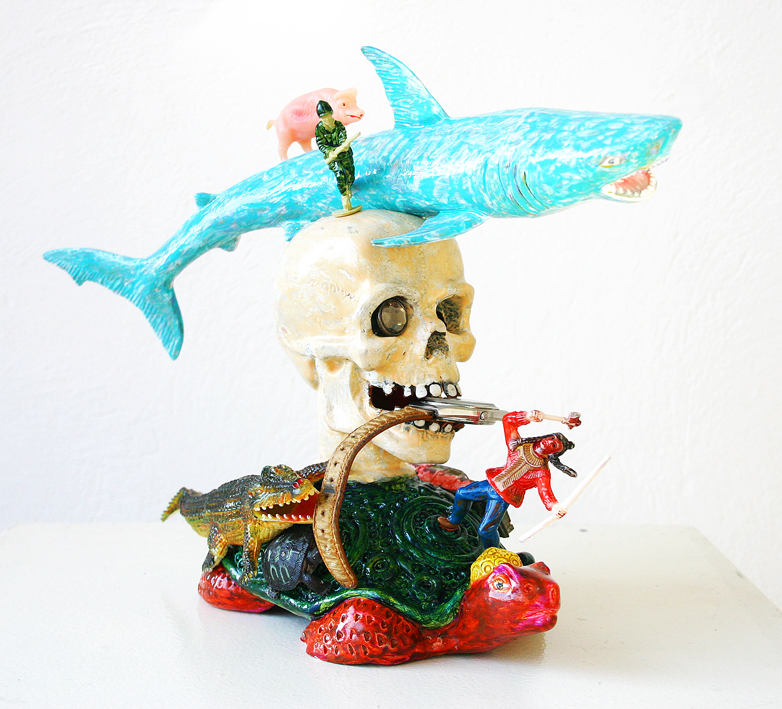[repeated: `as i said, i'm looking for new ways to visualize human relations, feelings, real-life struggle as well as uplifting moments. looking back on centuries of art, i find myself surprised that there is so little art which addresses this in a way that i find provoking, uplifting, inspiring.
this gives new motivation to continue my investigation. i feel sure enough of the emotive strength of the drawings which come up in this sense. and this translates into paintings as well. but enough words, the images themselves should be stronger.']
 self-portrait as a mother worried about her children
self-portrait as a mother worried about her children (own work, 2012, 30 x 36 cm, click on the image for an enlargement)
 rejection
rejection (own work, 2012, 21 x 20 cm, click on the image for an enlargement)
for the next image, also see the post on
notre dame des anges:
 seigneur notre retraite (in brown-red)
seigneur notre retraite (in brown-red) (own work, 2011, 30 x 40 cm, click on the image for an enlargement)
another theme that crops up ever more frequently: the people who do not fit well into our `wonderful' society. sure, they are the misfits, so to say. but who is the more crazy, he who accepts this crazy world, or he who does not fit in? if you have read my previous posts, you will know that i for one cannot simply answer that question. and my concern and sympathy are often with the misfits, and my anger is often directed at all the `respected' institutions which together comprise the status quo in our society.
 woman out of kilter
woman out of kilter (own work, 2011, 20 x 28 cm, click on the image for an enlargement)
i think emotive expressive power comes from the eyes, the face, the body language...and the materials and techniques used. this is what i study on, laboriously, and much unappreciatedly...but the time of appreciation will come, i suppose, once enough people see the works and enough time has passed for them to compare this avenue of art to other avenues. anyway, if you see any art touching on the same themes, please let me know, since it would be inspiring to me to know other artists with a similar outlook.

detail of
woman out of kilter (own work, 2011, 20 x 28 cm, click on the image for an enlargement)
 taking care of the psychiatric patient iii
taking care of the psychiatric patient iii (own work, 2011, 21 x 30 cm, click on the image for an enlargement)
 grief and comfort iii
grief and comfort iii (own work, 2011, 21 x 30 cm, click on the image for an enlargement)
 self-portrait in orange unrest
self-portrait in orange unrest (own work, 2011, 21 x 30 cm, click on the image for an enlargement)
 man, lost in thoughts and orange background
man, lost in thoughts and orange background (own work, 2011, 30 x 36 cm, click on the image for an enlargement)
 st. frances posing
st. frances posing (own work, 2011, 30 x 35 cm, click on the image for an enlargement)
 woman in white bra
woman in white bra (own work, 2012, 30 x 40 cm, click on the image for an enlargement)




















































